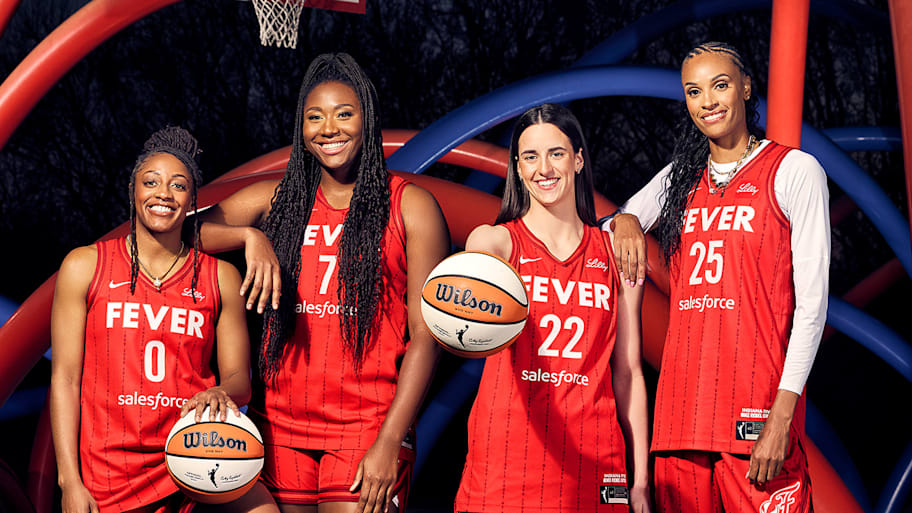Three years ago, Kelsey Mitchell felt like the Fever played every game on the road. Their schedule had plenty of games at home. But that concept did not mean very much to them in 2022.
The franchise was five seasons into a playoff drought, a stretch in which it had never so much as flirted with a winning record. Arena renovations meant the Fever spent that summer bouncing across different venues. They played games in their usual downtown home of Gainbridge Fieldhouse, on the state fairgrounds, at Butler’s Hinkle Fieldhouse. No matter where they played in Indianapolis, the seats were mostly empty.
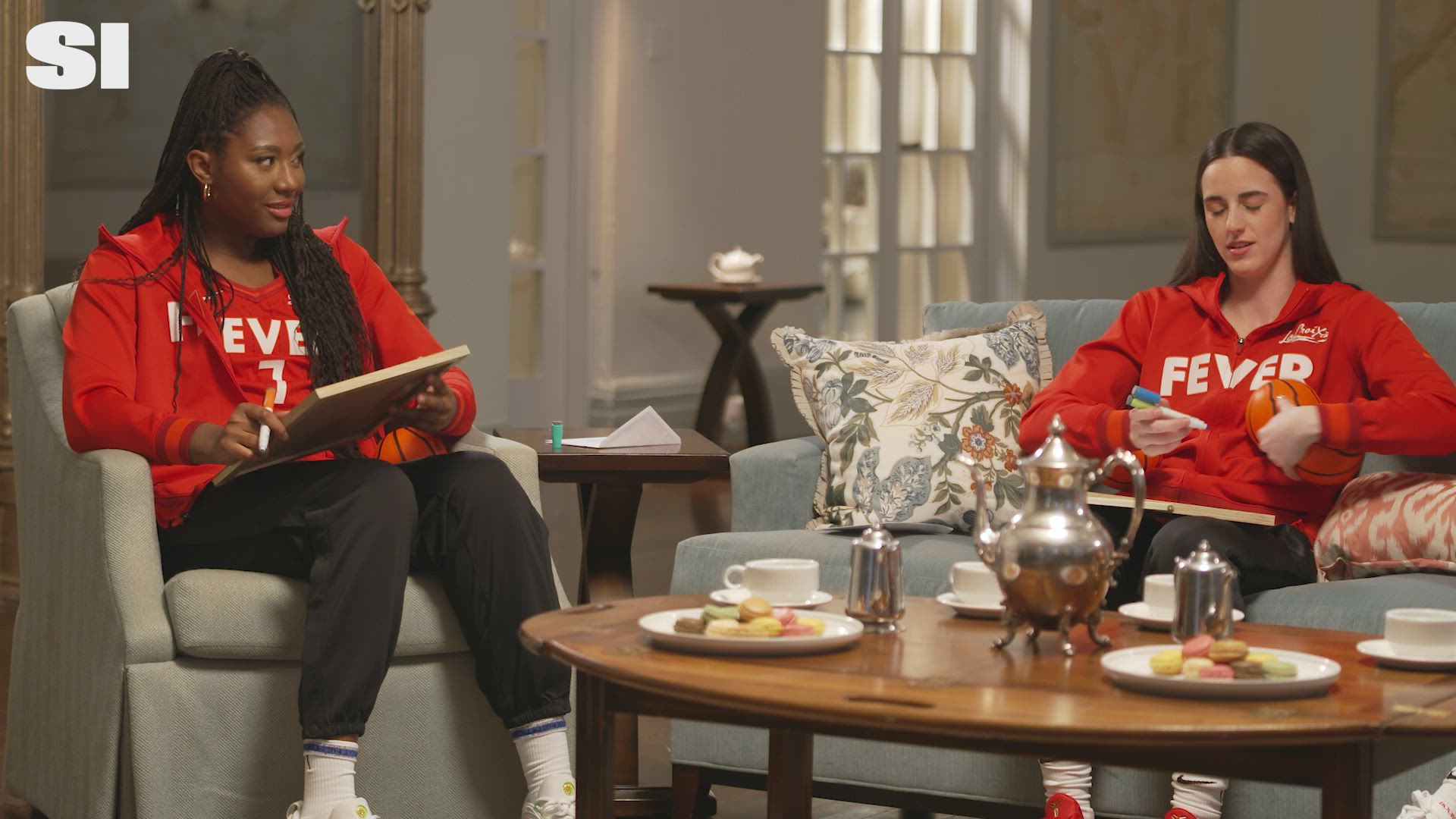
Indiana’s win-loss record was horrible, the worst in the league at 5–31, and so was the attendance record it broke. The 2022 Fever became the only team to average fewer than 2,000 fans per game without pandemic restrictions.
“You had to bring your own sense of momentum,” Mitchell says. “I can never forget.”
The memories are still fresh enough to sting. Almost no one around her can relate.
Over the last three years, Mitchell has seen the franchise turn over almost entirely once, and now again. The losing in 2022 led to No. 1 draft pick and ’23 WNBA Rookie of the Year Aliyah Boston. The continued losing in 2023 led to what must have felt like an alternate universe in ’24. Though they were still playing the same game under the same rules, they were doing so on a completely different stage, under different lights, with different stakes. The Fever had landed another No. 1 pick who also became Rookie of the Year, and this one was, of course, Caitlin Clark.
Opponents moved their games to bigger venues to accommodate the surging interest. The WNBA had not recorded a single broadcast with a million viewers since 2008. Indiana averaged more than a million viewers in 2024.
The Fever generated national discussion in a way that felt rare not just for women’s sports, but for nearly anything in the modern, fractured media environment. And despite a rocky start to the season, they finally killed that playoff drought, finishing at .500 for the first time since 2016. It was a revival that sparked a loaded question: What does a franchise do after a season like that?
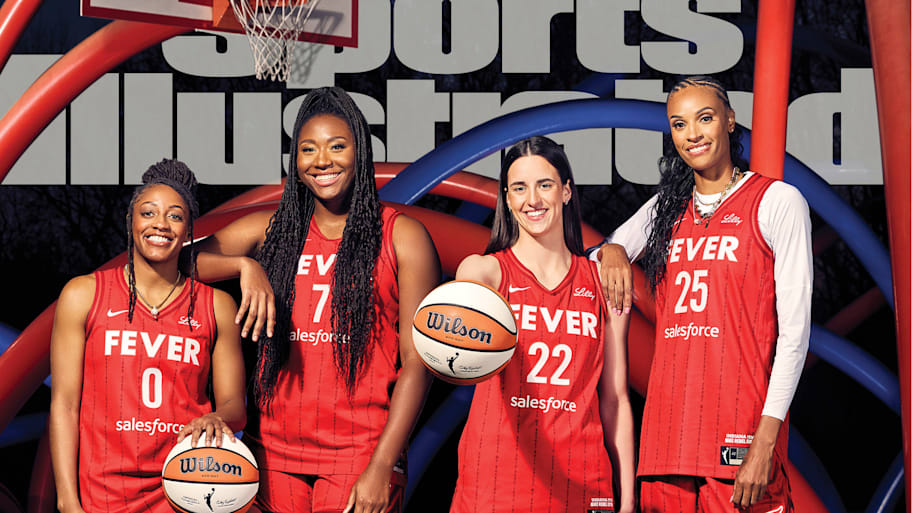
Go all the way in. There are two directions to the Clark Effect. Her presence changed the franchise, and the franchise decided it had to quickly change for her, too.
The Fever threw out any timelines concerned with steady rebuilds or modest growth. Instead, they did everything short of pushing a giant red button labeled WIN NOW. After getting swept out of the first round of the playoffs, Indiana announced a new coaching staff, new front office and new players to fill more than half the roster. (A new $78 million, 108,000-square-foot practice facility was announced, too.) The core of the group remained intact: Mitchell, Clark and Boston. Almost everything and everyone around them will be different this season in Indianapolis.
“Last year, compared to anything else I’ll ever do, between the fans, the media, the other teams—I think, for us, it was about getting through. And we did that really, really, really well,” Mitchell says. “Now? Nothing else can waver us.”
The Fever got off to a horrible start in 2024. How they recovered from that has set up their overhaul for 2025.
“Definitely a whirlwind,” Clark says. “From where we started and where we finished. And I think it just shows our resiliency and how much we really grew together, especially me, Kels and AB.”
Their early schedule did them no favors. Indiana began the season with 11 games in 20 days, giving it the most compressed opening schedule in the league. The Fever were also the youngest team—their average roster age was under 26—and they played like they barely knew one another. (That was especially true on defense, where their lack of communication and cohesion led to constant, costly lapses.) It was miserable: They finished that stretch 2–9. And it all happened under a media spotlight that worked as both microscope and fun-house mirror, amplifying and distorting every moment, often far beyond recognition.
“There was so much pressure for us to live up to these expectations in such a quick amount of time,” says reserve guard Lexie Hull.

That was followed by a locker room revelation. It could not get much worse. What lay ahead was not guaranteed to be great. But it would not be this bad. The Fever would eventually get a few days off. They would have more practice time. They would not feel so much like strangers on the floor together. And they could decide how they were going to handle whatever might be ahead.
“It made us closer,” says Mitchell, 29. “It made our culture different. It made the energy in the locker room and in the building different. You just gained a different appreciation.”
They felt out that dynamic in the weeks that followed. Some of that was learning to play together. Some of it was learning to navigate the attention they had captured. Some of it was learning more about each other as people. They started to string together wins.
Indiana still had a losing record when the Olympic break rolled around in July. But it had shown flashes of promise, and Clark, Boston and Mitchell were named All-Stars. What came next was something this team sorely needed: a real chance to breathe and escape the crucible of its season. The fact that Clark was not included on Team USA had sparked a fierce news cycle when the report leaked in June. But it meant that almost every player on the Fever would get a legitimate break while the WNBA season paused for three weeks.
“Just time,” Boston says. “To be able to hang around and kind of take a quick second from basketball to be able to come back and then remember why we love to play.”
They spent the first part of the break resting and the second part in the gym. The coaching staff organized bonding activities right before the season resumed. But the players found they did not especially need them. They had simply needed a chance to rest on their own followed by space to build together.

Perhaps they could have done without some of the specific activities. “Not zip-lining,” Clark says. “I showed up and I thought it was zip-lining. It was a ropes course. I thought I was going to die.” Teammates made the usually fearless Clark go first: “The only person I talked to was Lexie, because she was right behind me, and the only people I saw were the security guys, praying that I didn’t die 100 feet in the air.” So much for bonding. “Great memories, though,” quips Boston, who is afraid of heights.
Indiana returned in August like a completely different team. Clark figured out how to thread the needle on some of her bolder, riskier passes, and her teammates figured out how to anticipate them. Boston moved away from focusing her game on posting up and began to thrive in the pick-and-roll. Mitchell started scoring at will and capitalizing on the opportunities that came from sharing a backcourt with Clark.
The offense was faster and more fluid, and while the defense was still generally unimpressive, it was not as much of a liability. The Fever cruised the rest of the way: They clinched a playoff spot with more than two weeks left in the regular season.
“Everybody was watching us,” Clark says. “We found a way to rise to the occasion and really play our best basketball at the right time.”
That came to an end in the postseason when they were swept in the first round by the Sun. Indiana’s youth and defensive holes were exposed in a reminder that its midseason turnaround had its limits. But the players felt like they had unlocked something real in those last few weeks of the season. And so did the people above them.
Indiana threw out its plans and started drawing up new ones. Clark, Boston and Mitchell had shown the ability to carry a team into a window of contention now, rather than in a year or two, if they only had the right infrastructure around them. They needed to get much, much better defensively, both on the perimeter and at the rim. They needed depth. They needed some degree of veteran leadership, preferably with real postseason experience, and maximizing the impact of those potential roster additions would require upgrading the coaching staff, too.
“There was clearly an accelerated growth opportunity that happened after the Olympic break,” says Fever president Kelly Krauskopf. “It was clear that we might need to speed up this opportunity to really capitalize on what we had in the moment.”
Krauskopf herself was the first domino to fall. When the Fever were named an expansion team in 1999, she left her position in the league office to become the franchise’s first general manager, and she stayed for nearly two decades. She toiled through the difficult early years and oversaw the golden age that followed. She drafted Hall of Fame forward Tamika Catchings and built a squad around her that made 12 consecutive playoff appearances, including Indiana’s first and only championship, in 2012.

But when Krauskopf left to become the assistant GM of the Pacers in 2018—the first woman to hold such a high basketball operations position in the NBA—she assumed that was it for her in the W. She had previously rejected offers to return to the league. She also turned down the first one she got last year about coming back to the Fever. And the second. And the third.
“I said no for the first two or three weeks,” says Krauskopf.
She was being pitched by Pacers Sports & Entertainment president Mel Raines, who oversees the Pacers and Fever, both of which are owned by shopping mall tycoon Herb Simon. Raines kept trying to sell her on the gig. Krauskopf kept turning her down.
But she also kept thinking about it. Krauskopf went to a handful of Fever home games last summer and marveled at the wild crowds. Indiana had recorded just two regular-season sellouts in franchise history before 2024. Now, it sold out almost every game, with an environment that would have once been a dream for the playoffs now the norm for random summer weeknights. Krauskopf remembered some of the conversations she used to have in the league’s lean years. “We may not reap the rewards of what we’re building right now,” she would tell players. “I don’t know if we’re going to be around to see it. But it will happen.” No one had to hold that possibility on faith anymore. It was finally happening.
You’ve got to do this, she eventually told herself. You’ve got to go back.
It helped that her old job was being offered to her with a new kind of freedom. “Take a look at the roster, take a look at the staff, take a look at everything,” Krauskopf describes her mandate. She was being given the resources to build a contender as quickly as possible.
The Fever announced Krauskopf’s return as president in late September while the playoffs were still underway. Less than two weeks later, she brought in Amber Cox from the Wings as GM and COO, who felt so eager to join that she gave her answer before Krauskopf could finish asking the question. A month after that, Christie Sides was dismissed as coach; her replacement was Stephanie White, the same coach who had just led the Sun to their playoff win over the Fever.
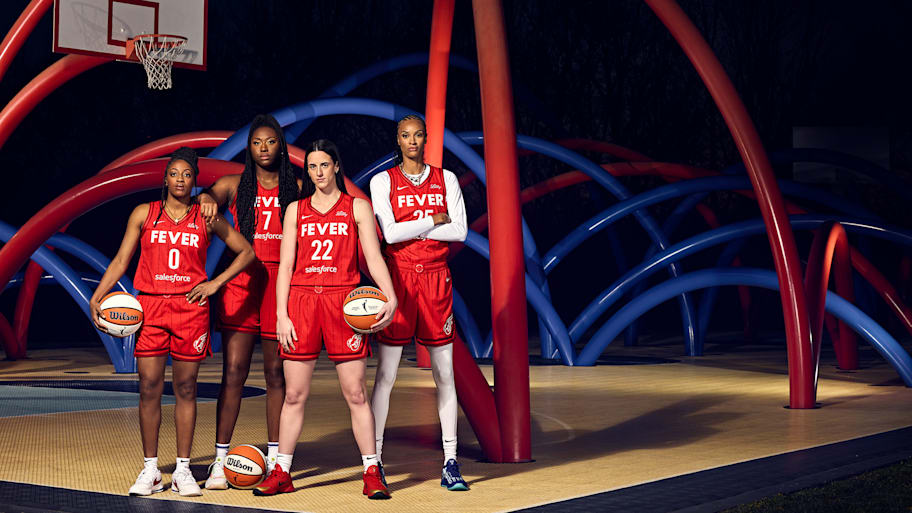
It was a homecoming for White much like it had been for Krauskopf, who picked White for the Fever’s inaugural roster in the expansion draft. (The Indiana native played out the rest of her WNBA career with the Fever.) And her first head coaching job had been with … Indiana, where she had originally been hired by Krauskopf in 2015, leading the Fever to the WNBA Finals in her first year on the job. “I feel like this franchise runs in my blood,” White says. She jumped at the chance to return home.
Within six weeks, the Fever had installed an entirely new leadership group with old ties to the franchise, and they would spend the coming months overhauling as much as possible. But their first task was not bringing in anyone new. It was retaining someone who had been there longer than anyone else on the roster.
Free agency might have looked rather obvious from the outside for Mitchell. But it was not.
On the one hand: She had just played her the best season, with the most efficient shooting of her career, scoring 19.2 points per game. She had finally seen the postseason, sold-out gyms, intense fans and massive TV ratings after so many years of grinding through the opposite. On the other hand: This was Mitchell’s first real taste of leverage. She did not want to squander it. And she had seen this franchise through so much change already. Mitchell had four coaches in her first seven years with the Fever. If she chose to re-sign, that would go up to five in eight.
Mitchell did not want to leave, exactly. But she also did not know if she wanted to stay.
“It was our No. 1 priority this offseason,” Clark says. “That was something that had to happen. She had the best year of her career, and it was super fun to get to watch, and I wouldn’t have been able to do what I did if it wasn’t for her.”
The message was similar from Boston. “Our squad’s not the same if she’s not here,” she says. Mitchell’s voice felt as critical to the team as did her scoring. Boston wanted her back desperately and told her as much. Yet she grounded her message in something bigger.
Take your time. Do what’s right for you. We’re sisters for life no matter what.
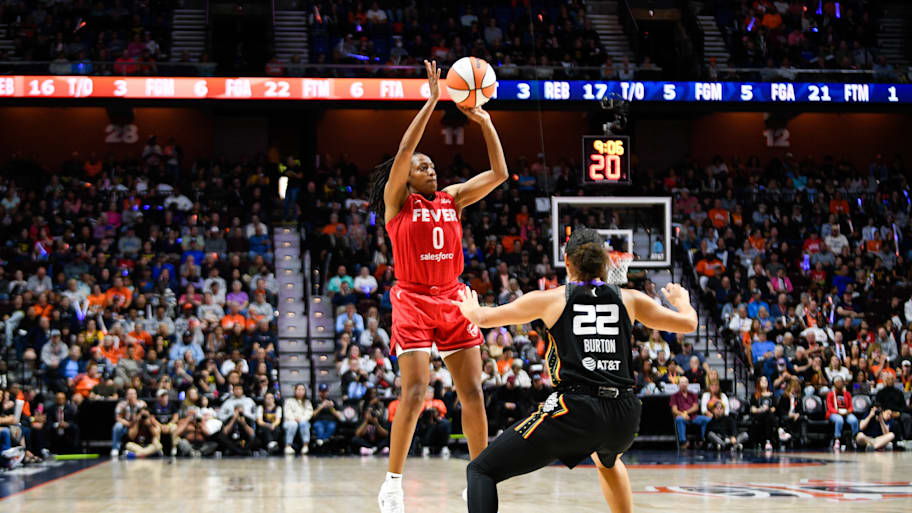
Mitchell spent the offseason playing in China, which meant these calls happened late at night for her. The conversations with her teammates clarified what she wanted. But it was the conversations with leadership that clarified what she would be getting. White and Krauskopf pitched her on a vision with more detail and more potential than anything she had ever heard in Indiana.
They wanted to build on the chemistry Mitchell and Clark had established in the backcourt last year with even more freedom and movement. “First and foremost, getting really creative,” White says. “Allowing them to play off of each other, putting them in positions to accentuate their strengths.” Clark assisted on 81 of Mitchell’s baskets last year—more than any one guard had fed another in the WNBA. And the front office had clear, immediate plans to build out the defense around them and get the depth they badly needed.
Mitchell was part of Krauskopf’s last draft class with the Fever before she left to join the Pacers. She knew how difficult the years in between had been for the player. “It was personal,” Krauskopf says. “I just wanted her to know that I recognized that.” And she wanted Mitchell to know that she wasn’t talking about ramping up in a few years. She was talking about now. “I’m not going to waste time,” Krauskopf says. “With her, particularly, because this is a player who’s in her prime, she’s starting her eighth season, and she deserves it.”
That meant something to Mitchell, who re-signed at the end of January. In February, most of the roster around her would be replaced, upgraded through free agency and trades.
That meant adding six-time All-Star DeWanna Bonner, who played under White in Connecticut, widely respected for her warm presence in the locker room and how she uses her length and versatility on the floor. (“She’s got a big heart, but she’ll also rip your heart out,” White says.) It meant bringing in former Defensive Player of the Year Natasha Howard, originally drafted by the Fever in 2014, who has won three championships elsewhere and is vocal about wanting to add a fourth. It meant bolstering the bench with Sophie Cunningham, Brianna Turner and Sydney Colson. Each of the five additions brought their own strengths but also a common experience: All have been to the WNBA Finals.
“This is going to be a different experience,” Krauskopf told prospective acquisitions. “All eyes are on this franchise. All eyes are on every movement of what we do.”
The players they wanted most were those who responded: Bring it on.
Clark led her own recruiting push, reaching out to players management was going after. Her calls were appreciated. But she found that none of them had been particularly needed.
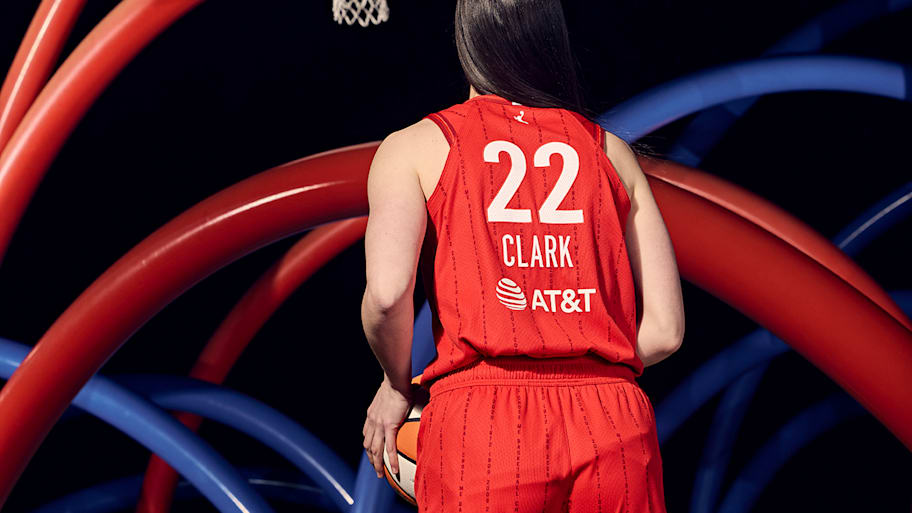
“People want to come here and play with us and be a part of this organization,” Clark says. “Honestly, in our case, it worked out pretty fast. Everyone wanted to come.”
And while the franchise was speeding ahead, Clark had a rare, crucial opportunity to stand still. That was something that had been all but impossible for her in the last two years: As she made her transition from college to pro, star to megastar, she’d had precious little room to develop herself and her game on her own time. Clark turned down opportunities to play elsewhere this winter. She instead spent most of the offseason in the gym in Indianapolis.
White sat down with the point guard almost immediately after accepting the job. The coach laid out her full scouting report on her and where she needed to improve. None of the concepts surprised Clark—“I feel like I’m a very self-aware person”—but some of the numbers did. (She really, really does prefer driving to her right over her left, it turns out.) White set up regular sessions between Clark and the Fever’s new player development coach, Keith Porter.
Clark’s top priority was getting stronger. She hit the weight room four times a week. (The change was pronounced enough that, when given her uniform for the photo shoot with Sports Illustrated, Clark asked if it was a smaller jersey than what she wore last year: “Same size,” replied the equipment manager. “You’re filling it out more.”) And she worked to complement that strength with better finishing ability, greater versatility working off the ball and a more developed midrange game, including the addition of a floater.
“[White] was just very intentional about how I can develop,” Clark says. “I think it’s just refreshing and gives you a new sense of confidence, more than anything.”
Just about everything around the franchise got an upgrade this offseason. Clark knew that had to include her, too.
This winter of sweeping change addressed nearly every need on paper. Indiana now must figure out how to make those changes fit into a cohesive system on the floor.
“The challenge for us as a coaching staff is: How much can we throw at them right away?” White says. “How much will we really be able to do throughout the course of this year? We can’t go too fast, but we also have to push them to make sure that we’re in a position to do the things that we think we’re capable of.”
That means keeping the bones of this fast-moving, well-spaced offense, granting the players as much freedom as possible to create their own plays rather than run set ones. It means restructuring the defense almost entirely. And it means being sensitive to fitting this many new pieces together.
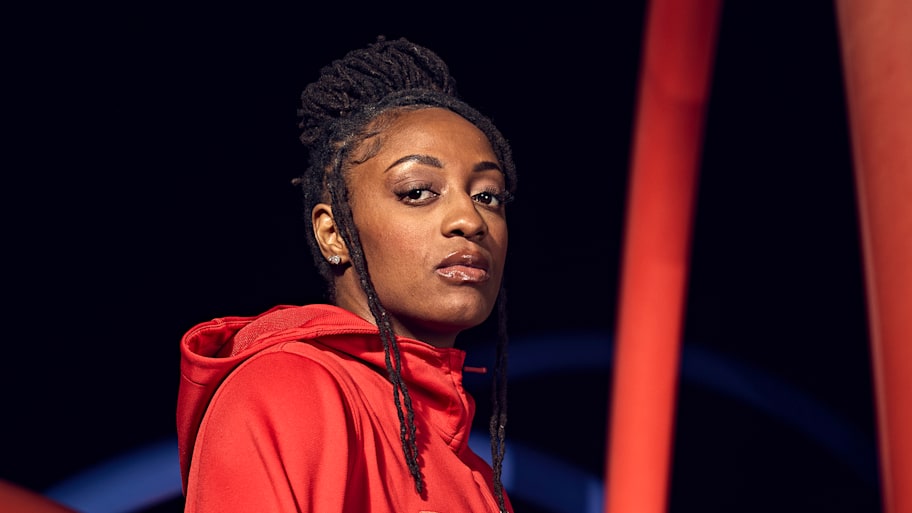
But those additions all came in knowing what could make this place more exhilarating than anywhere else in the league and what could make it more challenging, too. All of them wanted to win in this specific environment—that was obvious from the earliest gym sessions and team conversations. “This group likes to hang out together,” White says. “That is not a small piece.” The coach also made sure to keep one member of the previous coaching staff in assistant Karima Christmas-Kelly. “We don’t know what this team went through a year ago,” White says. “Karima does, and she can help us navigate that.” The returning players feel like they forged their culture in a fire last year. Parts of that will remain. Others will necessarily change.
“It was like fresh air coming in,” Mitchell says of her return. “It didn’t feel as chaotic coming back. I think boundaries are already set. We have a coach. We have a program.”
She chose to stay exactly where she was. It’s like nowhere she has ever been.
This article was originally published on www.si.com as There’s Much More to the Fever Than the Caitlin Clark Show.
